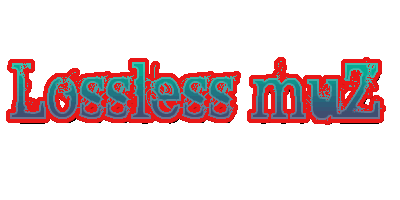"Jazz
fills up my life. It means to me everything — said Namyslowski. —
Playing in a quartet suits me best... Until recently I did not set
great store by composition. But now to be successful one cannot merely
play Horace Silver's themes and other people's arrangements. And so I
have created my own quartet and my own music, to be able to play what I
want and how I want...".
Quoting these words I cannot help
recalling a thin and insignificant looking boy who burdened with a huge
cello scrambled on to the gigantic stage of the Forest Opera in order
to play with the Modern Combo group, which was taking part at the II
International Jazz Festival at Sopot (August 1957), as a completely
unknown soloist. And yet a few years later Zbyszek Namyslowski won
recognition not only with jazz fans and connoisseurs at home but also
with the exacting critics abroad — after numerous tours of his quartet
in such countries as Italy, Belgium, West Germany, Switzerland,
Czechoslovakia, Yugoslavia, Finland, USA.
Namyslowski went
through most suitable stages before he achieved his present-day
results; he played the trombone in traditional and swing bands, for
some time also the trumpet and cornet, and when there was need he
accompanied the vocalists on piano. But the ambitious musician was
never after the label of a "multi-instrumentalist". Eventually he chose
the alto saxophone in which he could prove himself completely. What we
appreciate with Namyslowski particularly is his equally enthusiastic
attitude to all styles in jazz; he is always himself while playing
hard-bop along with rhythm and blues, free-jazz and the third current
along with the fringes of pop-music, and who at the same time would
feel an irresistible fascination towards new ventures? A separate
chapter could be devoted to Namyslowski's compositions, the more so
that his ambition is to draw inspiration from Polish folk-lore which
leads to the sort of music that Poland exports as her contribution to
the world of jazz.
While writing on Namyslowski we must say a few
words about the remaining members of the band as they also have their
say in modern jazz. The pianist ADAM MATYSZKOWICZ (b. 1940) made his
first steps as jazzman within the Cracow "jazz boheme"; in 1963 he made
his mark as member of "The Jazz Darlings", and already in those days
critics predicted him a fine career which was to lead him subsequently
to appearances in the quartet of the known Polish tenore saxophonist
Michal Urbaniak. His greatest success abroad was his accompanying to
the known Polish group "Novi" which won the first prize at the 15th
International Jazz Festival in Zurich (1965). The percussionist CZESLAW
BARTKOWSKI also became a jazzman in a student milieu having begun his
career in the FAR quartet. In 1961 he made himself known to the wider
public at the International Jazz Jamboree at the Warsaw Philharmonic,
then he participated in the triumphant tour of Namyslowski's quartet
(among others in Britain, Italy, West Germany). From time to time he
joins other bands such as the excellent quartet of the Polish pianist
Krzysztof Komeda. The bass player JANUSZ KOZLOWSKI (b. 1941) started,
like his colleagues, as member of modern student bands. For some time
he played with traditional bands such as "Warsaw Stompers", Ragtime
Jazz Band, the group Bossa Nova Combo and "Pagart's" big band with whom
he went on numerous tours abroad.
Siodmawka (Seven-Four Bars) —
After the composition based on Polish mountaineer's themes called
"Piatawka" (Five-Four Bars) in which Namyslowski used rarely appearing
in jazz rhythm 5/4, the composer went here still farther and used in
"Siodmawka" the beat 714. Along with the free form we hive here
harmonies of a mountaineer's tune. This is undoubtedly one of the most
interesting items of the record.
Despair — In respect of melody
and harmony, an equally interesting piece. This is a twelve-bar form of
blues, but without the use of the blues scale.
Frances the Terror
— Here we come to know the quartet operating within free-jazz, the sort
of music which perhaps does not appeal to all, but expresses, however,
the artistic changes occurring in our days and the evolution of jazz.
The band is improvising in two tempi, two phases, and does it very
consistently.
The Beetle Humming in the Reeds — A folk-tune
again, this time it's a Krakowiak. The quartet plays it with dash and
half-jokingly.
My Dominique — A typical ballad of simple
harmonies, in slow tempo. The composer wrote it with his little
daughter, Dominika, in mind.
The Wardrobe — The composition,
which is being played dynamically and in a "dirty" way, may be regarded
as a mixture: free harmony + big beat. Let's hear what's been the
result.
Mead Drinker Lola — A sort of Charleston, a musical joke
with typical solo parts. It can do without commentary, being simply a
musical relaxation. (Jozef Balcerak, "Jazz" Journal's Chief Editor,
1996)
"Despite the comings and goings of our many American
visitors in 1964, one of the most refreshing things to hit the British
jazz scene last year was the visit of these four young Poles. This
album... is a striking illustration of the high standard of European
jazz. ("Melody Maker", London, Jan. 9th 1965)
"...As an
orthodox modern jazz group, they possess all the qualities one would
look for in their American counterpart... As a group, the four men are
obviously well accustomed to each other's playing.. In addition their
music has a strange attractive flavor which one can only put down to
their contact with Polish folk music...". ("The Times", London,
18.3.1966)
(original line notes from the album's back cover)

